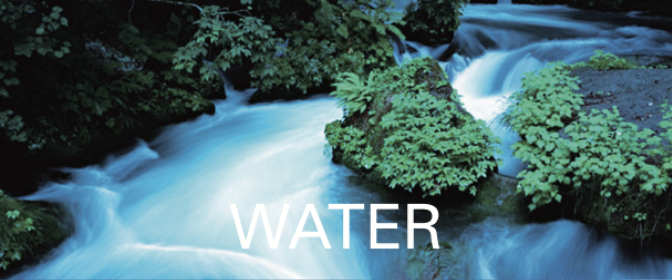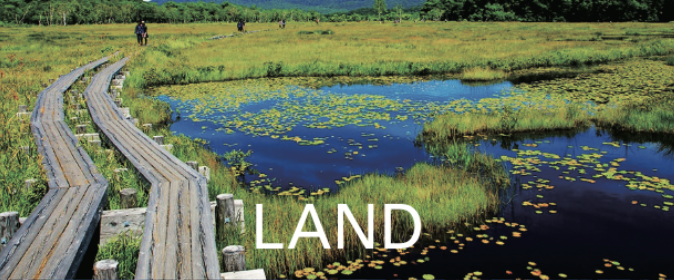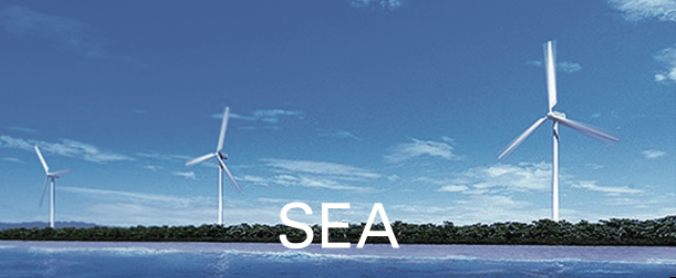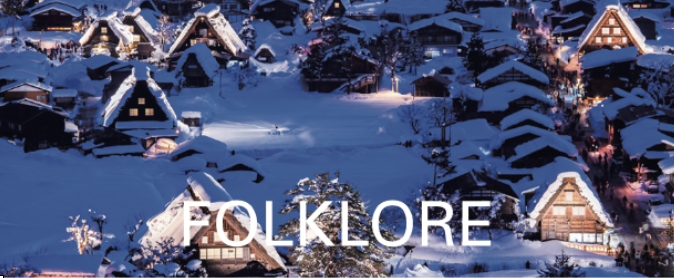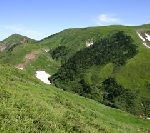
The area near the top of Mt. Makihatayama is covered with abundant Alpine plants and virgin forest. There is a mountain trail in Niigata Prefecture, whose elevation rises 1,500m.
There is a famous waterfall, such as Fukiage no Taki, Fukiage Water Fall, where water blows up into the sky, Aigame no Taki, Aigame Water Fall where pure blue water flows down, and Waremekisawa Swamp, with its strangely shaped rocks. Rhododendron (a rosebay), Nikokisuge, Broad dwarf day lily, and Primula cuneifolia bloom there in the spring.
You can also enjoy the snowy gorge walks in summer.
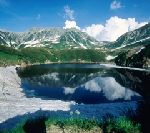
Murododaira, a lava plateau, is at an altitude of 2,450m, where Alpine plants such as Lilium medeoloides bloom in the summer. Mikurigaike Pond was created by an eruption 50,000 years ago, and Tateyama Mountain Range is reflected on the azure water surface where the snow melted.
The Tateyama Mountain Range’s orogeny movement had created a variety of topographical landscapes. The unrealistic scenery of Jigokudani Valley, which is a world where nothing lives, captures the heart. There is the history of the mountain worship.
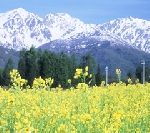
The Shirouma Mountain Range is in the northernmost part of the Japanese Alps. Mt. Hakubadake, with an altitude of 2,932m, is one of Shirouma Sanzan, the three mountains: Mt. Hakuba-Yarigatake, Mt. Shakushidake, and Mt. Shiroumadake. Mt. Shiroumadake has a mountain shape with different slopes on both sides of the ridge line, which extends north to south, and is a reservoir of Alpine Plants.
You can go to the Happo One Nature Trail, by changing gondola lifts, where you can climb to enjoy the force of the mountains approaching. You will eventually reach Happpouike pond with an altitude of 2,060m, which was formed by the accumulation of earth and sand. You feel that life is a natural structure that has been circulating since ancient times.

Nabedaira Kogen is at an altitude of 1,300m. On the nature trail surrounded by the natural forests of beech and Mongolian oak, wild grasses, and others, and flowers in Oku Hida, you can enjoy the magnificent scenery of the Northern Alps.
This visitor center hall has mountain video footage and a searchable model of the mountain. They also hold various events, such as a walking tour, led by a visitor center guide and snowshoe tours in the winter, along the nature trails.
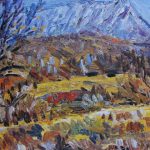
This museum opened in 1983. It opened as the first public museum in the Sanin region. Since then, this museum has been working to introduce the beauty of Yonago and to evaluate artists associated with the local area. The museum possesses more than 1,704 paintings by local artists and drawing of the rich local climate.
Kobayashi Wasaku (1888 – 1974) is a western landscape painter. He was inspired by the painting of Umehara Ryuusaburo (1888 – 1986), who learned under Asai Chuu (1856 – 1907), a Japanese painter who developed the western style of art movement in Japanese painting, and traveled by sketching the sea and mountains in various parts of Japan.
There is the work of Mt. Daisen by Kobayashi Wasaku. He captured the movement of light and the atmosphere in the spring scenery, where all living things in the mountain awaken from a long and harsh winter, by painting quickly with paints mixed roughly by a knife. It is a work of Tenchihorei: heaven and earth are buxom and beautiful.
– Mt. Daisen has been a holy mountain from the ancient times and the ancient agricultural settlements existed around Mt. Daisen.
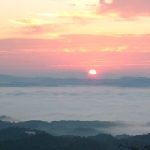
The summit of this mountain park has an altitude of 654m and has 360 degree panoramic views and a sea of clouds. You can see Mt. Gagyusan (Height about 480m) and Bicchu Matsuyamajo Castle from the summit. Bicchu Matsuyamajo Castle is the highest mountain castle with a tower in Japan, which was renovated and reconstructed by Kobori Enshu (1579 – 1647), a feudal lord, a master of the tea ceremony, an architect and garden designer, and his son.
The history of Mt. Yatakayama started 2.5 million years ago. The rocks were hard and this mountain remained after many years of erosion. The view let you feel a fount of innocence to evoke emotions.

Mt. Tsurugi (height 1955m) is the second highest peak in Shikoku Island. You can reach the summit in 15 minutes by lift or 40 minutes on foot from Minokoshi, a main mountain entrance. At the summit, you can see the Yoshino River, nicknamed Shikoku Saburo below, Mt. Daisen, Totori to the north, over the Seto Inland Sea, and Kii Mountains to the east. The summit is a flat grassland called Heike’s Baba, a riding ground.
It was said that the name of this mountain came from the sword of Sanshu no Jingi, the three sacred treasures of the Japanese Imperial Court – Sword, mirror, and ornamental bead. The sword disappeared, along with the Emperor Antoku (1178 – 1185), which helped the Heike (Taira) clan assume the throne.

Arita Town is a town surrounded by Mt. Kurokamiyama. There is Ryumonkyo Gorge at the start of the mountain trail, where you hear the singing of Kajika frog, a Japanese singing frog. The mountain stream is at the top of the list of one hundred Famous Waters.
The 400 years history of Arita ware as the first porcelain in Japan, spurred the development of high quality pottery stones. The no fade beauty of Arita ware has the integrity and the vibration of Ryumonkyo Gorge inside. The origin of its beauty comes from the Gorge.
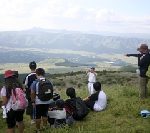
Mt. Asosan became a mother of stone culture of Kyushu Island by carrying a repeated, pyroclastic flow of large eruptions throughout Kyushu Island for 90,000 years. Using the museum’s Mt. Aso walking guide, you can meet Mt. Aso, still alive from Mt. Nakadake to Sunasenrigahama, overlook the view of the caldera spreading from Mt. Daikanbo to Gairinzan, the outer rim of a crater, and stroll the meadow around Kusasenrigahama and Mt. Komezuka.
You can feel the wonder of nature by seeing the water that springs out from Shirakawa Water Source at Minamiaso Village.

Aso is a caldera (nabe) formed by a large, repeated eruption, approximately 90,000 years ago. The Shirakawa water source, which is enshrined at the Shirakawa Yoshimi shrine and belongs to the Aso shrine, springs 60 tons of water every minute.
A lot of Rainwater is stored in the basement of Aso and springs up over time.This water makes the Shirakawa River and joins the Kurokawa River in the Aso Basin. This water enriches the Higo Plain and reaches the Ariake Sea.
This spring water is soft water and keeps at 14 degrees Celsius. The taste of it is delicious.
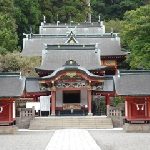
Mt. Takachihonomine (1574m) was an object of worship since ancient times. Kirishima shrine used to be located at the foot of the mountain and was burned frequently by eruptions. Shoku Shonin (910-1007), a High Priest of the Tendai sect of Buddhism, belonging to Mountain Buddhism, moved this shrine to Takachihogawara (970m) in the Heian period.
There is a beautiful vermilion- lacquered shrine built in 1715 by Shimazu Yoshitaka (1675-1747), the lords of the Satsuma clan, Kagoshima, after passing through an approximately 800-year-old sacred cedar tree, which is the ancestor of a cedar tree in South Kyushu Island.
The Gagaku, Japanese court music that came from Kagura, and Formal Ritual Dancing at the Imperial Palace has been inherited from this shrine.

